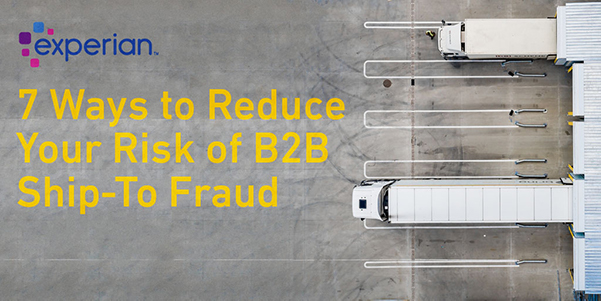
The lease for the $50,000 office equipment seemed like any other order at first glance. The customer passed the credit check without issues. But when the multinational corporation was unable to collect payment, it dug deeper and realized that the ship-to address was a residence. With more research, the business discovered that its “customer” had used stolen identity information to pass the credit check.
Because the company did not use systems to check for fraudulent ship-to addresses, the fraudulent order was unnoticed and the company fell victim to ship-to fraud. Although only a handful of the company’s customer accounts were fraudulent, the company lost a significant amount of money last year because each account included large six-figure deals.
What is ship-to fraud?
In a ship-to fraud scheme, a criminal poses as a customer and presents a verifiable billing record, address and credit history. Companies often deem these criminals as credit worthy because their records are up to date and they have a good credit history. Often, the first few orders placed are for smaller items and the bills are paid on time, which increases the criminal’s credit limit. The criminal then places a significantly larger item and never pays the bill. Because the shipping address is a location unrelated to the actual business, the criminal can easily pick up the order and sell the goods.
While ship-to fraud happens with consumer goods, the impact is typically more significant in the B2B world because the cost of the goods is higher. Also, most consumer goods are paid for before the items ship. However, B2B companies often extend lines of credit to customers or bill at set intervals, which means products are often shipped before payment.
Keys to reducing risk
Here are five ways you can help prevent B2B ship-to fraud at your company:
- Review your business application process. Most companies ask for headquarter information when determining the creditworthiness of a new business customer. However, many companies have products shipped to locations other than the headquarters. During the application process, capture all operating locations on the application. This makes it easier to determine which shipments are going to legitimate addresses and those that may be potentially fraudulent.
- Compare ship-to addresses with all operating location addresses. If a product is being sent to a location that was not listed on the business application as an operating address, there is a risk the purchase is fraudulent. The risk is even higher if there is large physical distance between the ship-to address and the customer’s operating and billing locations.
- Determine if the ship-to address is a freight forwarder or consolidator. If the ship-to address includes a container number, it is possible that the purchase is fraudulent. Criminals often use freight forwarders and consolidators to receive fraudulent purchases because it creates more anonymity for the fraudster.
- Check to see if the ship-to address is a P.O. box. Because most businesses don’t use a P.O box for product orders, a P.O. box used as a ship-to address should be a red flag for potential fraud. P.O. boxes are another way criminals anonymously receive purchases.
- Look up the address on Google. Put the address into Google and see if the business placing the order shows up in the search results. If not, look for these red flags:
– A residence – Consider if a home-based business is likely to order the product.
– A forwarding or consolidating business – Some of these types of businesses do not use container numbers in the address, which means physical verification is your best protection.
– Property for sale – While shipments to properties on the market can be legitimate, this raises concerns because criminals often use vacant buildings as ship-to addresses. - View the location on Google Maps. By viewing the photos online, you can get further verification that the address is an actual business. You can often get a feel for the area and see if there are a lot of vacant buildings or other red flags. Be sure to check the data on the photo to see if it was taken relatively recently.
- Empower employees to escalate potential fraud. Your employees are your first line of defense against ship-to fraud. They are the ones processing the orders, printing the shipping labels and packing the boxes. Train your employees on potential red flags and have a process to handle concerns. Encourage employees to pick up the phone and speak with customers to clarify any concerns about the address. If they aren’t convinced it’s a legitimate order, have a process for the employee to stop the shipment and escalate the issue up the chain of command.
Many legitimate businesses and shipments may have a single red flag for ship-to fraud. However, when an order has multiple red flags, you should be especially cautious and delay the shipment until the shipment is proven legitimate.
Because manually confirming all ship-to addresses can be time consuming, many businesses are now using automated solutions to flag suspicious orders. Your B2B company can save money and time by using a system to help eliminate ship-to fraud. By waiting to develop a process to prevent this type of fraud, your company risks becoming the next cautionary tale.
